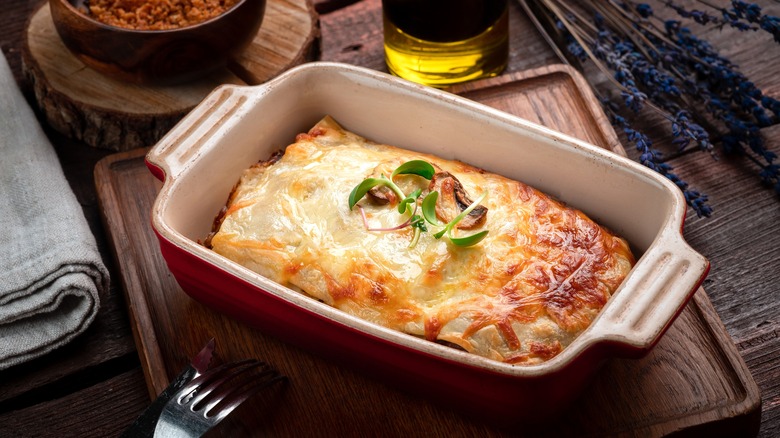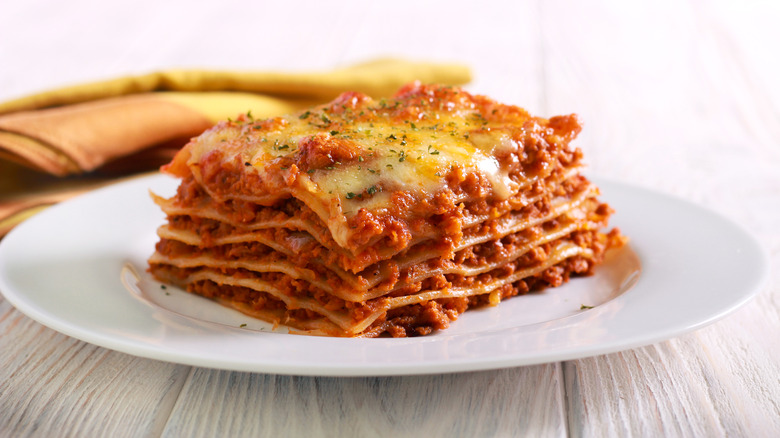Why It's Absolutely Essential To Cover Lasagna While Baking
Sundays at nonna's were either a pot of bolognese or a cheesy, saucy lasagna and as many aunts, uncles, and cousins as you could handle. Both meals feed a hungry crowd and have some degree of comfort about them, but perhaps lasagna is the most comforting. There are a few ways to make lasagna, from the classic with the bolognese and bechamel to a spinach and ricotta number that's just as decadent and gooey as the classic.
What draws most people to lasagna is the cheesy, saucy combination. You want your lasagna to have a good ratio of pasta to cheese to sauce, though. Sometimes there can be too much of a good thing. A perfect ratio of those three elements will ensure a lasagna slice that stands on its own when plated and shows off its distinct layers. Rest your lasagna before slicing so that things settle and solidify just a bit. But, if your lasagna is too soupy, your slices will never come out tall with distinguishable layers. Perhaps your sauce is too thin and runny or your noodles were still too wet during assembly, according to The Food Channel.
On the other hand, if you don't want a dry lasagna, don't forget to cover the meal while baking.
A dry lasagna is preventable
Not using tin foil when baking lasagna is perhaps one of the most common mistakes everyone makes when attempting lasagna. A layer of tin foil is an absolute necessity for ensuring your lasagna comes out perfectly saucy with crispy edges and delicately browned cheese. Lasagna benefits from a two-stage bake –- covered and uncovered. Covering your lasagna will ensure the bolognese sauce won't evaporate and reduce too much and leave your lasagna dry. During the second phase of baking, you can uncover the meal to melt and brown the cheese on top. While you don't want a soupy lasagna, you also don't want it to be bone dry, either, and tin foil will help you achieve that, per Morsel.
If you're worried about all that precious mozzarella sticking to the tin foil, spray your tin foil with cooking spray or brush a super thin layer of oil on the side that will touch the food. When it comes time to peel off the foil for the second half of baking, it should come right off, leaving the mozzarella where it should be – on top of your creation, per The Kitchen Whisperer. If you covered your lasagna and it's still dry, there could be a few reasons for the dryness. If you decided to use no-boil noodles, not having enough sauce between layers could make a dry lasagna (via Epicurious). The no-boil noodles will soak up the sauce and become tender during baking.

